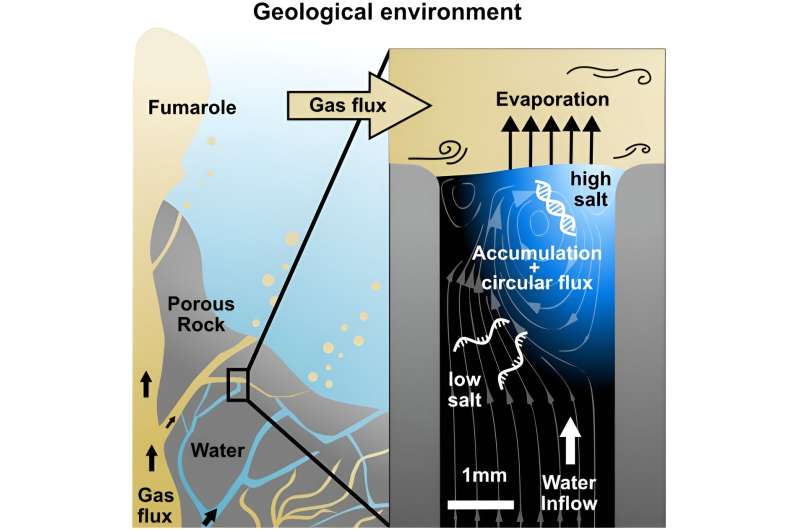Researchers have found a plausible geological setting that could have kickstarted life on Earth by enabling the replication of nucleic acids. This study, published in eLife, explores how a simple gas flow over a narrow channel of water created an environment conducive to nucleic acid replication. The findings suggest that this unique geophysical scenario could have played a crucial role in the emergence of life on our planet. Nucleic acids are the fundamental building blocks of life, and understanding how they could replicate is a significant step in unraveling the mysteries of life’s origins. Origin of life researchers and nucleic acid experts will find this research intriguing and valuable.

That could change with a whole new look at the idea offered by an innovative study comparing how well gases and liquids mix in gas-permeable membranes, which may pertain to the flow of volcanic gases over undersea water channels that enable nucleic acid replication. The alternative proposed model is a paradigm shift from conventional theory and provides numerous opportunities for future research on the origin of life.
This study is centered on the simulation of a regio-native geological system in which gas streams over channels occupying subaqueous layers. It is in this context that researchers observed an incredible occurrence: a large build-up of nucleic acids at the gas-water interface. Together, this accumulation and changes in salt concentrations by the gas flow provide an environment for nucleic acid replication.
The ramifications of this finding are game-changing. They say it reveals a hitherto undiscovered method for the beginning of life, free from temperature swings – a long-time process in numerous existing proposals. The work suggests that some nucleic acid replication could take place under such geophysical scenarios, which seriously question our perception of the necessary conditions for life.
One of the most intriguing findings to emerge from this work is how such a strand-separation phenomenon may occur naturally in the nucleic acids. Replication is very crucial for this process and has been a significant but unsolved puzzle in theories of the origin of life. The results of the study provide a possible explanation for this divide, not via temperature fluctuations but via interactions between gas flow and water dynamics.
This result is likely to be meaningful not just on Earth. The discovery of a novel feasible route to the origins of life reshapes our planetary perspective on where and how life might develop somewhere in the universe. This would mean other gas-water interfaces on planets or moons, too, might provide an early home for the start of life—broadening the list of potentially habitable settings.
In the future, this study suggests many more directions for research. Thus, attention can now be turned to exploring other types of gas flows and how they influence nucleic-acid behavior. There is also an opportunity to investigate how these processes may have competed with other prebiotic chemistry on the early Earth.
Discovery of such lifeforms only begins to shed light on the origins of life, but they are key pieces in the puzzle that are still being solved. They force us to move beyond the ordinary explanations and think about the complex interactions between geology, chemistry, and physics that might create life.
Ultimately, these studies on gas flow and nucleic acid replication offer a major step forward in our growing understanding of how life began. Not just providing new looks into how life might have arisen on Earth, but also broadening how we think about where life could exist in the universe. The exploration of these possibilities brings us ever closer to solving one of the greatest mysteries in human history, how life started on Earth.
